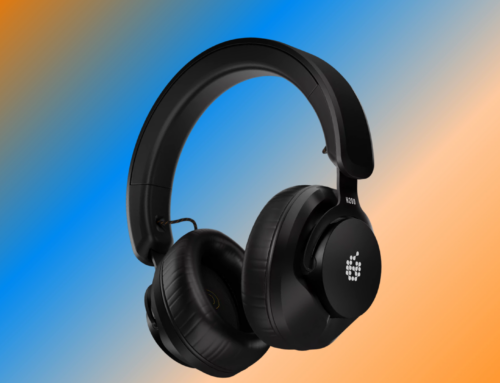 With a flurry of IPad applications emerging as controllers to existing DAWs, DJay by Algoriddim attempts to provide its users with a self-contained DJ setup. Though this app touts that it can give everyone the opportunity to be a DJ, there are some features that can be useful to experienced DJs.
With a flurry of IPad applications emerging as controllers to existing DAWs, DJay by Algoriddim attempts to provide its users with a self-contained DJ setup. Though this app touts that it can give everyone the opportunity to be a DJ, there are some features that can be useful to experienced DJs.
THE BASICS:
The first thing you’ll notice is the somewhat realistic look of the application.
The two-turntable setup can display album artwork on the record as seen above, or display a standard record image. Pitch control (named “speed slider” in the app setting) is displayed on the outside of each turntable with optional key lock to preserve the song’s key when speeding up and slowing down songs. The pitch control is very accurate and can be modified to ranges as far as 75% of the normal speed of the song. One factor that experienced DJs will notice is the normal setting for the pitch control is inverted, meaning to increase the speed of the record you push the pitch control away from you. This can easily be switched by clicking “ON” speed slider invert in the settings. There is no setting to move the pitch control from the left turntable to its normal position next to the tone arm.
Users can manipulate the playback by touching the desired position on the displayed waveform, moving the tone arm to the desired position on the record, or by triggering one of four set cue points.
Several other features give a novice the feel of a live DJ by making it easier to transition (auto BPM sync/timed cross fader transitions) and perform preset scratches (two-finger dragging on a record performs an auto-cut scratch technique). Still, without having prior knowledge of how these features can be used in an analog setting, it is difficult imagine that someone without prior DJ experience could maximize the potential of the basic features.
THE EXTRAS:
The DJay app is a long way from replacing a normal DJ setup, but there are some features that lend to its use as a portable workstation with the ability to test out transitions, effects and other ideas while on the go.
The loop section provides the opportunity to manually loop portions of tracks or use the presets. This can come in handy if you want to sample a loop roll (rhythmically reducing a loop’s beat measures to build a tension effect) on a song, before getting to your home set up. You can even record your work and use the hi-res AIFF to manually edit a track in your home studio if you would rather not perform a loop roll live.

Another good use of the DJay app is for trying out new ideas for mashups. By putting the BPM sync to use and setting a few cue points you can test out ideas for mashups, record the entire session, and put together a final product once you get back to your DAW (or if you’re IPad savvy enough, Garageband for IPad is at your disposal).
Lastly, if you have a track with a good percussion intro or drum break, setting a cue point at the kick, snare and hat can turn DJay into a mini drum machine. Trying different combinations of the kick, snare and hat can produce some creative beats. Again, recording the entire set and coming back to edit once you reach your home setup gives you the freedom to continue to produce and try out new ideas while you are commuting on public transit, on a flight or being dragged out shopping.
THE VERDICT:
Pros:
- Portable
- Upon loading a song, BPM is determined within seconds
- Ability to edit presets toward your style
- Easy to pick up for experienced DJs
- Ability to record hi-res AIFF files
- Multiple cue points
Cons:
- Marketed to novices, but may be too complex
- Triggers for multiple cue points buried in sub-menus
- Unflattering preset transitions (anything outside of “standard” does not sound good)
- No “undo” feature
The DJay app is marketed toward those who want to become a DJ, but mastery of the UI relies on intuition derived from a typical analog DJ setup, which could be difficult for a novice to pick up. For the experienced DJ, the turntable UI is not close enough to to the real thing to warrant serious consideration as a performance tool, but the controller-like features have several uses for someone who is trying to test out some fresh ideas without being chained to the home studio.




